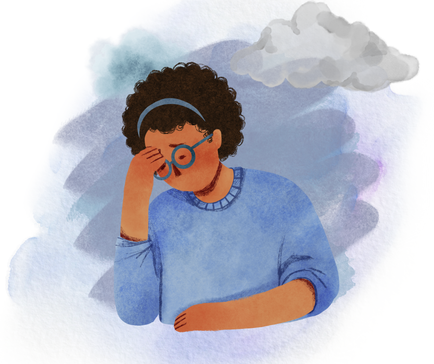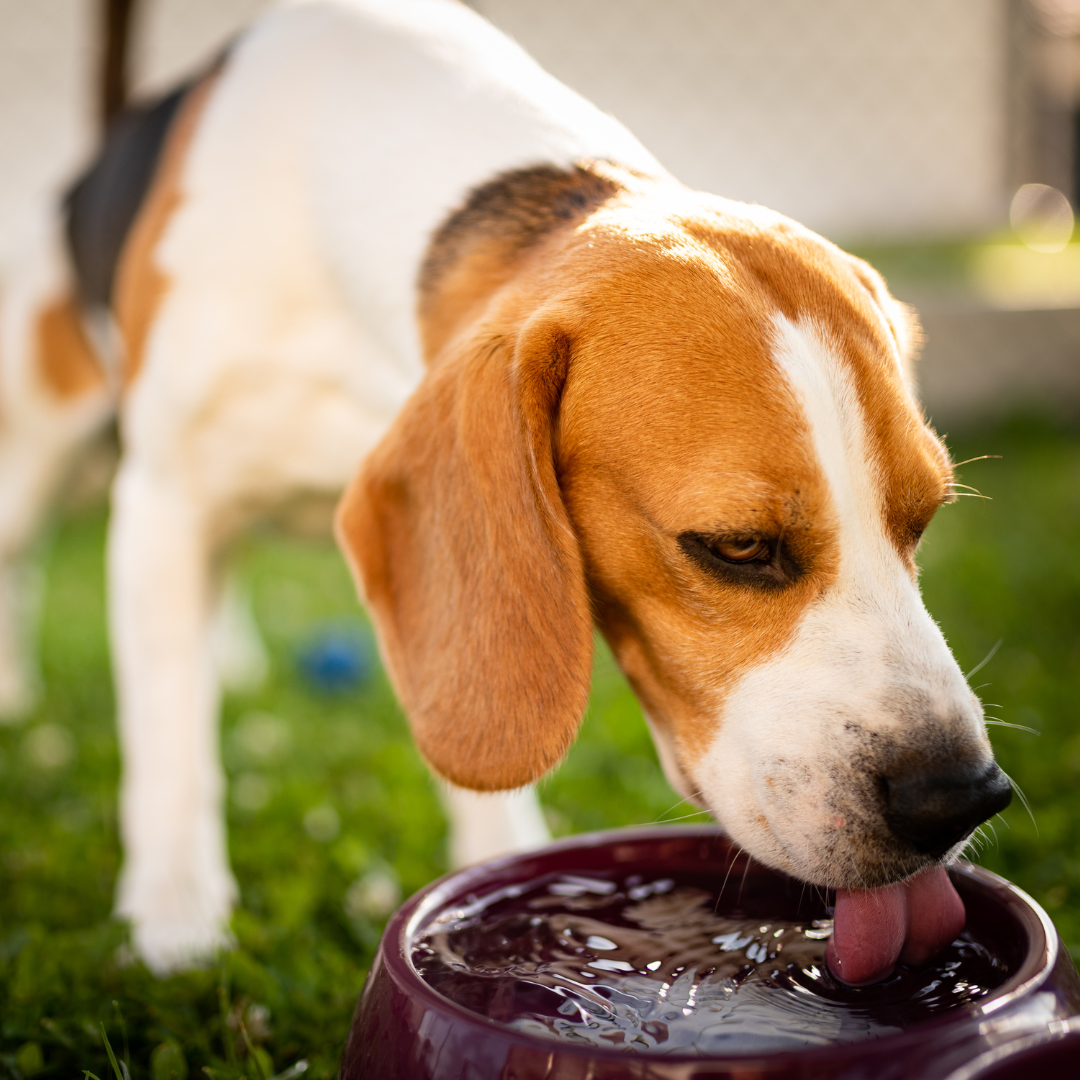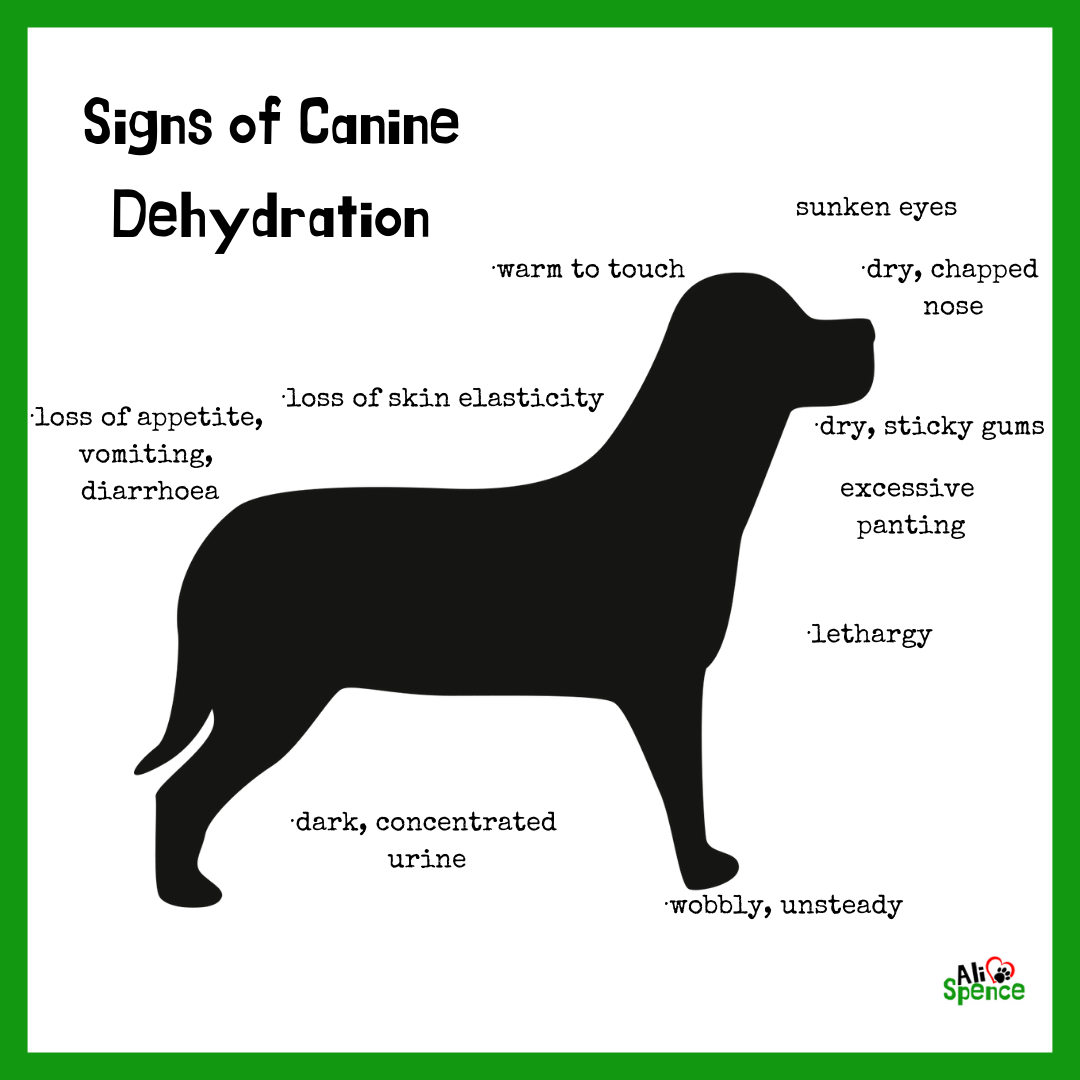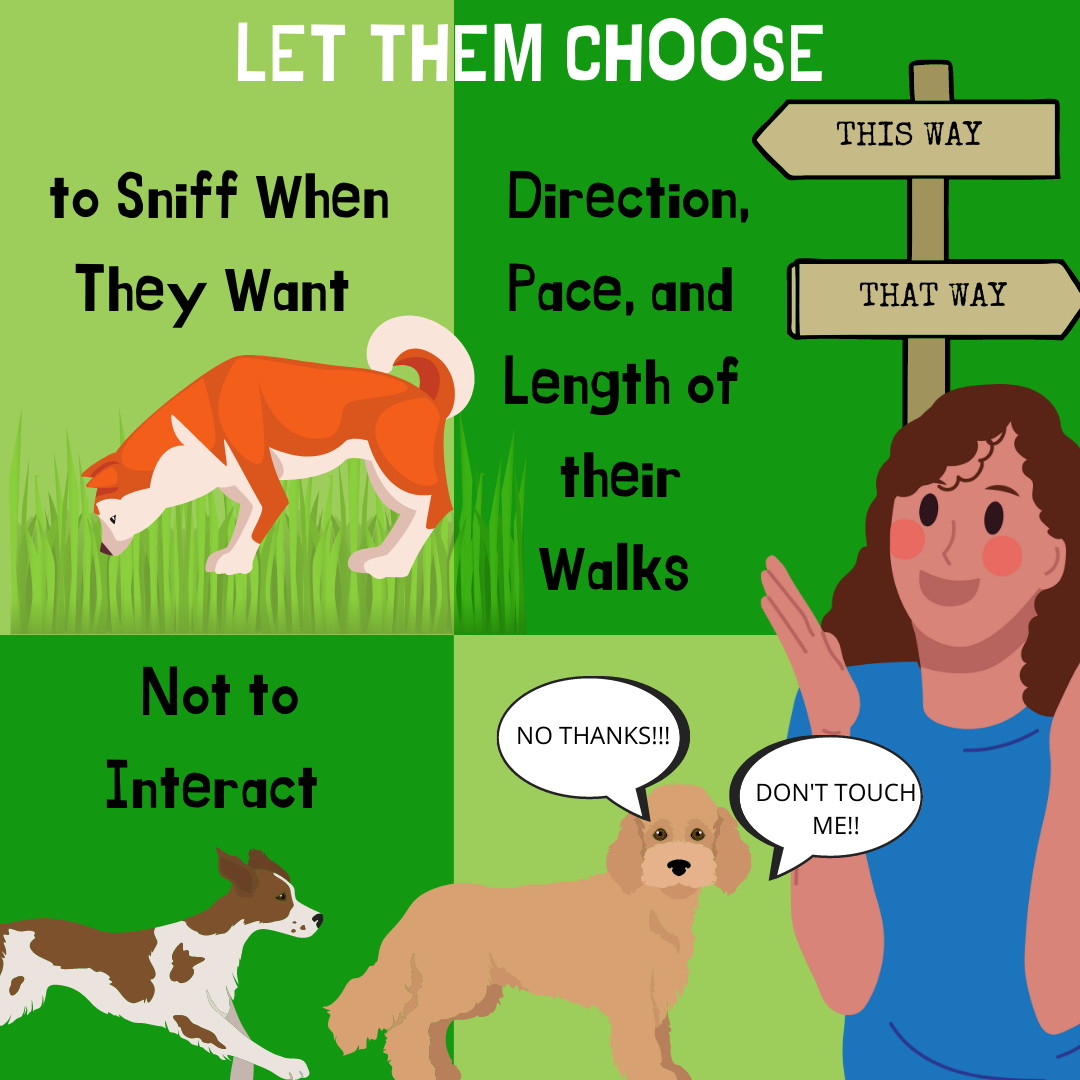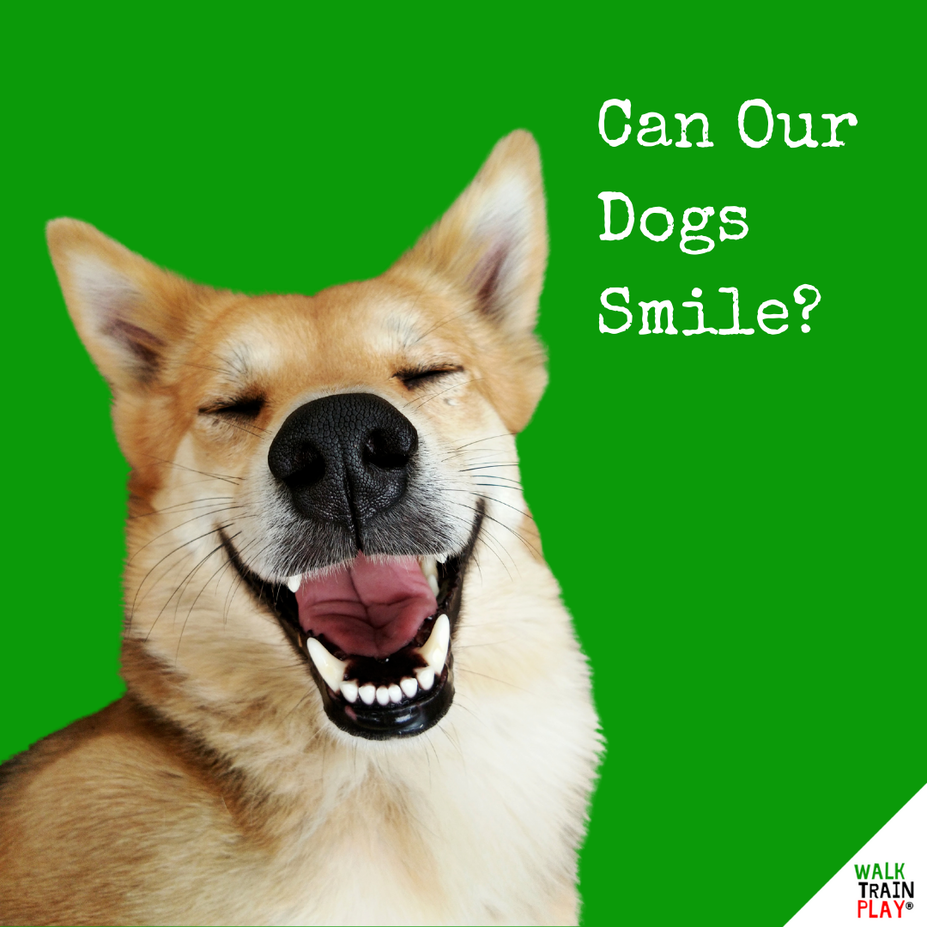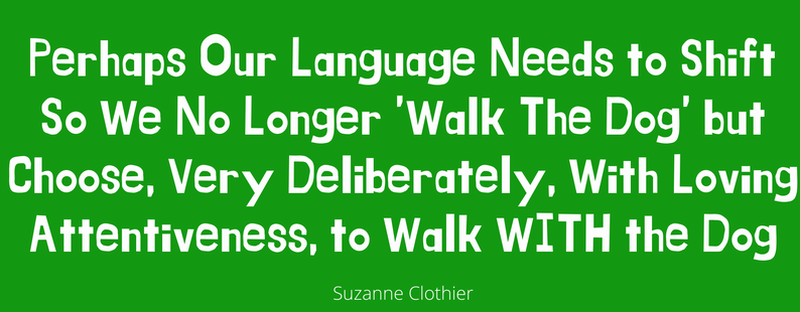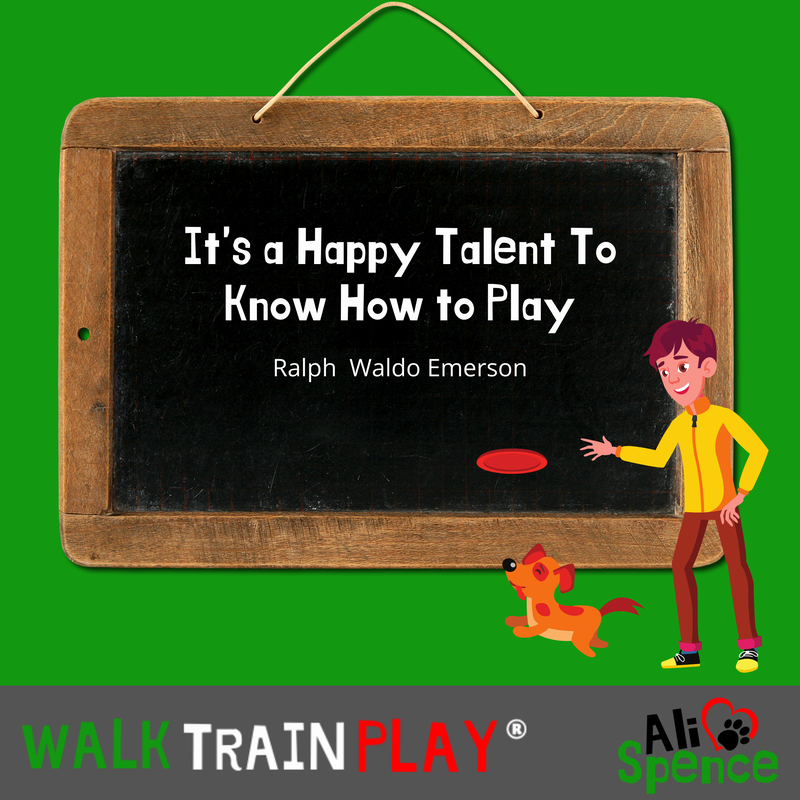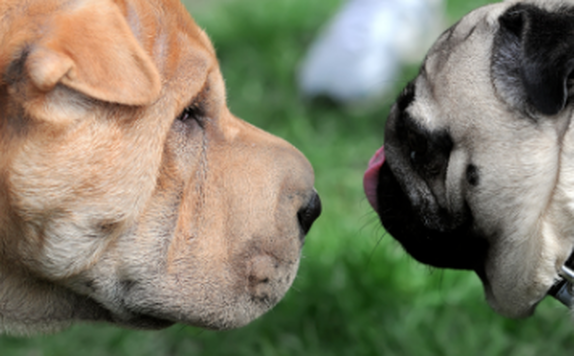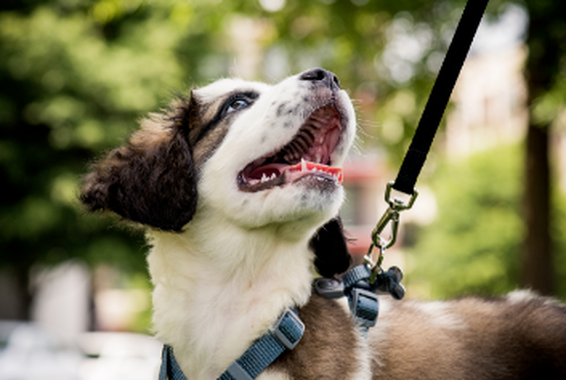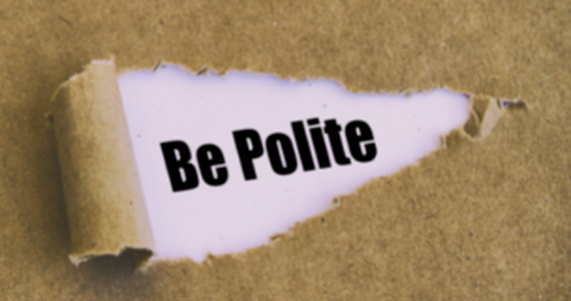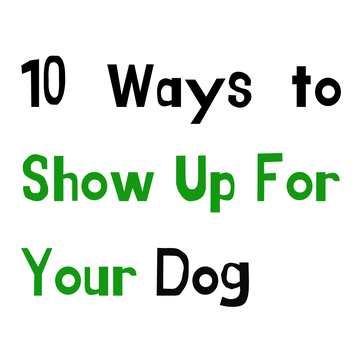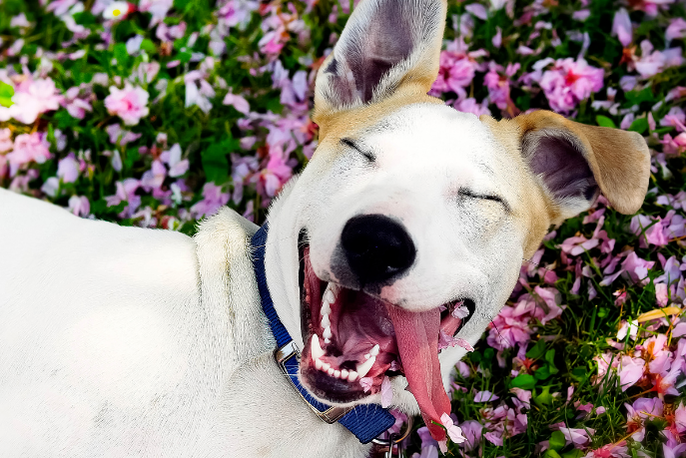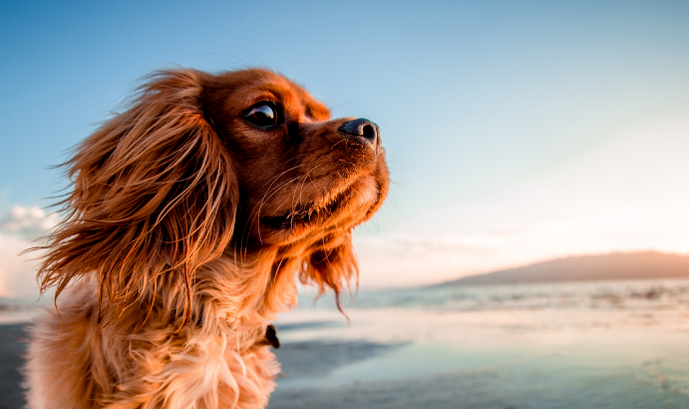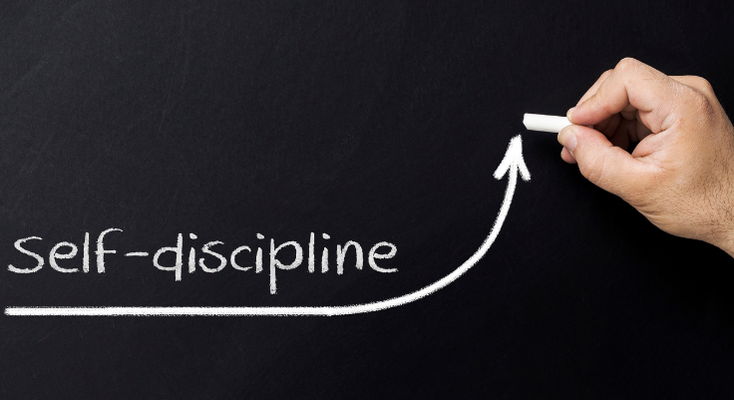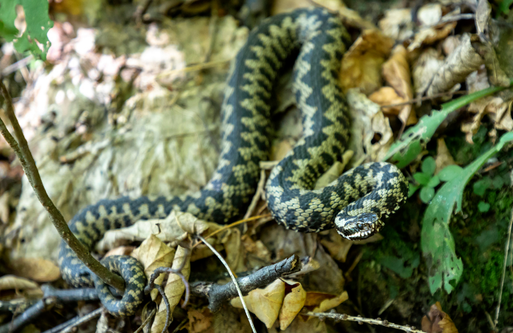|
5/20/2023 0 Comments Feeling Overwhelmed?When we live with dogs that are afraid of the world, it can cause us to feel overwhelmed. This can cause us to feel sad, angry, frustrated and even depressed. Feeling overwhelmed can sneak up on us over a period of time, or a single event can cause it. We spend much time looking after others - our work colleagues, friends, family and dogs. But how much time do we spend looking after ourselves?
Do you know when you are feeling overwhelmed? It is important to recognise when we are feeling under pressure and to take action to help ourselves feel calmer. We must be kind to ourselves and not ask too much of ourselves or our dogs. We must practice self-care, prioritise tasks and ask for help. We can also delegate some responsibility and break larger tasks into smaller ones. Here are some activities that may help us manage our feelings:
Feeling overwhelmed at different times in our life is a normal reaction. It is normal to feel sad, angry, and frustrated if it is in relation to what is happening in our life. Bringing a dog into our life is a significant change, and it can take time to adjust. We must exercise patience with our dog and ourselves as we make changes. We are exploring getting to know each other and how each other feels in various situations. It is important to go slowly. Trying to do too much too soon will contribute to overwhelming feelings. We may envisage a dog that we can take anywhere that will fit into our lives, but this may be different to what our dog needs. We need to go at their pace, whilst they gain confidence and resilience. The tortoise won the race, not the hare!
0 Comments
7/11/2022 0 Comments Dogs & DehydrationDid you know it's National Pet Hydration Awareness Month? This is observed throughout July to promote awareness about the importance - our days and nights are getting hotter and our hydration needs are increasing. Humans receive plenty of reminders from adverts and social media to stay hydrate. We can buy special bottles with timings on to remind us to drink so much by a specific time; we can set alarms on our phones and download apps to complete hourly. Our dogs rely on us! We are responsible for refilling our dog’s water bowl, and ensuring its cleanliness. We can set a reminder to fill our dog’s bowl with cold water. Our dog’s body is 80% water and when our dog cannot get enough water they quickly begin to lose health and well-being. It can seriously affect their mobility, strength and chronic dehydration can cause death. Water is essential to our dog’s hydration and it allows them to regulate their temperature too. Our dogs do not sweat like us and only sweat a small amount from their nose and paws. They regulate their temperature by panting and this causes water evaporation. It is therefore critical that we maintain their hydration levels especially during hot periods. How much water should our dog drink? Our dogs need to take in enough liquid to prevent them from becoming dehydrated. This amount varies depending on our dog’s size, diet and activity levels. Generally, this is between 30ml-50ml of water per kilogram of body weight. This allows normal body function, and normal nutrient transportation, circulation and digestion. Some of this water will be obtained from their food. Water can be obtained from tinned and raw food. Kibble has been dehydrated during processing and contains reduced amounts of water. Signs of dehydration It is important to know what the signs of dehydration are: Water Concerns
Sometimes our dog’s reduce the amount of water they intake. This can be caused by:
We must get our dog to the vet if our dog stops drinking. Like us, some of our dogs do not really like the taste of tap water. It is preferable to give our dog fresh, filtered water. Experts now consider glass and bamboo bowls ideal for our dog’s water due to plastic leaching into the water. Healthy snack that are hydrating can be a good way to get extra water into your dog. Cucumber, is low calorie and full of water. It also makes a refreshing drink. When you are providing any water supplement please ensure there is plain water available also, we like our dogs to have choice. Watermelon is another suitable snack that contains a high eater content. Bone broth is a good way to hydrate your dog too. You can make your own or buy it from your local raw food supplier. I stress the importance of not replacing good clean water, provide both. Active Dogs Some dogs can best be described as athletes and never tire regardless of how much exercise we give them. It is vital that these dogs have a drink during exercise. This is often from their favourite water hole, in hot temperatures this is likely to dry up. We must therefore carry water with us for them. Top your dog up during their walk and at the end. I carry an insulated water bottle with me; who wants to drink warm water? I don’t, neither does my dog. I also carry a collapsible water bowl. Some companies sell a two in one bottle. Travelling with Our Dog Always carry water with you. Unexpected things happen, vehicles break down, traffic can build up, accidents occur. If you happen to get stuck in one of these unfortunate events, you dog will be so grateful you remembered their water and a bowl. 7/4/2022 0 Comments Dogs, Agency & ChoiceWe make decisions on behalf of our dogs every single day. Our dogs have little control over their environment, social encounters, food choices, relationships, who they live with, who their friends are and all elements of survival. They don’t even get to decide when it is time to go to the toilet. Agency is the ability to make choices and exert control over life. Our dogs experience loss of agency in all aspects of their life due to domestication. Humans spend a lot of time attempting to suppress their natural expressions of barking and attention seeking. Research shows that human and non-human animals need to have a sense of control in order to experience positive feelings and mental health. We all need to be able to make decisions about our environment and what we perceive as aversive; things we do not like and wish to move away from. When we are able to make choices based upon our own preferences we are able attain a sense of psychological well-being. Our dogs are the same. Frequently, our dogs make better decisions for themselves than we do. I often see dogs attempting to avoid another dog and their guardians trying to force the interaction. This forces the dog into an unwanted encounter that can and regularly results in an altercation. So what can we do to give our dogs a sense of agency? The answer lies in empowerment. Empowered dogs are happier dogs. A dog that gets to choose and make decisions for themselves learns and develops confidence and resilience. First, we have to change our own mind-set; learn to respect our dog’s decision making process and acknowledge its worth. When we do, we relinquish some of the power we have over our dogs and replace it with a mutual understanding and trusting relationship. We change our thoughts from forcing our dogs to do what we want, simply because it is what we want to co-operation and appreciation. We need to be mindful of our dog’s canine needs and recognise where these are not being fully met. We can then begin to create opportunities for them to make choices for themselves. We can learn to collaborate with our dogs and become inspired to give them their best life. This all sounds a bit complicated doesn’t it? But it really isn’t. It just requires us to think about how we can create agency. All we need to do is be respectful and attentive to our dog’s communication – they do tell us a lot if we listen. Here are a few ideas:
If you need help setting training objectives please give me a call - 07870 989933
I offer individually tailored 1-2-1 Canine Coaching Sessions which may also be helpful. Each session is 1-2 hours long and includes a follow-up email report and telephone support. Sessions start at £45, packages are available for multiple sessions. 4/22/2022 0 Comments Can Our Dogs Smile?Can our dogs smile? If so, why do they smile? We have all seen an endearing look on our dogs – a relaxed face, soft eyes and a big cheesy grin. That’s a smile isn’t it? But is it? Do our dogs actually smile like we do? Most canine professionals don’t consider a canine smile to be a true smile in the same way as humans smile. We often interpret a wide-mouth that is panting, a relaxed tongue hanging out and a submissive grin as a smile. However, some people, especially children, can view an aggressive teeth display as a smile too. That’s a bit worrying isn’t it? It is vitally important to teach our kids to read our dogs’ body language to prevent our dogs doing something they can’t take back. The good news is that most canine smiles are from a happy dog, but it is so important to learn what expressions are from a happy dog and those that aren’t. Experts suggest that dogs are genius at reading human body language. They have learnt as they evolved, how to make humans happy. Humans will smile back at their dog, talk cute talk and provide things for their dog that they like, treats, affection and cosy time with them. These rewards ensure that our dogs keep offering their smiles. A dog may be triggered to smile at us when we smile at them. They like our happy reactions and will learn to trigger our happy emotions. There is a phenomenon called emotional contagion. We have all experienced this. Someone smiles at us, we smile back at them before we even have time to think about it. This causes oxytocin (the cuddle hormone) to be released. This happens whether it is a human smiling or our dogs. Smiling feels good. Every dog is a unique individual and will behave differently to others. What may cause one dog to smile may not cause another. We must remember they are all different and learn to appreciate their own characteristics and personalities. A dog’s smile may be part of their genetics, a behaviour that comes from neoteny. Neoteny is a process that causes an animal to retain certain characteristics from puppyhood into their adult life. Such behaviours include jumping up to greet humans, wagging their tail, face licking and smiling. Humans smile at each other to show they are friendly. Do dogs smile at each other to express friendliness? Domesticated dogs do smile at each other, but they also use their whole body to indicate their friendliness.
So our dogs do smile, but not the way we do. Their smiles are influenced by our own body language. We need to learn canine body language and allow them to have freedom to express their feelings.
#smiles #learntotalkdog #awareness 1/24/2022 0 Comments Walking The Dog“I’ll be back in a bit, I’m taking the dog for a walk…” We frequently hear this said in households up and down the country. We see people walk their dog around the neighbourhood, on lead as part of their daily routine. Sometimes it is a leisurely walk, which both dog and human enjoy. Often it is a quick burst of energy before being popped back into the home and the human leave. So how much does your dog enjoy this? At some point we need to consider what our dog actually enjoys. Our spaniels love to run and be off lead, walking them round the block on the pavement just wouldn’t cut it. For our elderly dog, this would be a perfect opportunity to sniff and interact with the world. Our dogs will try to communicate to us what they like. There may be reluctance to go down a certain path – after all the scary dog lives at No.92. Our dog may have some arthritis making going far painful. They may prefer to go a different way because the scent is stronger in the other direction. We need to give our dogs the opportunity to choose when we can. This helps them feel more confident and every choice inspires exploration and curiosity. Next time you take a walk, focus on being WITH your dog. It is not about getting from A to B or just following the path. Think about what your walks feel like to your dog – STEP into their PAWS for a moment. It is not important how far you walk but an opportunity to explore the world and use some of their innate skills. Give them chance to sniff, dig, hunt, walk slowly, and walk fast. The point is – do it WITH them, not for them. Doing dog-like activities WITH them is fun and I can tell you from watching dogs for hours and hours, this stuff tires them out just as much as a 5km walk with your leading the way. Remember to take time to stop and sit too. Yep that’s right I said sit on a walk. This is good for you, you get to observe the world passing by but so does your dog. You can learn a lot about stuff by just sitting and being still. Dogs like variety too, just like us. So don’t always walk them in the same place, in the same direction. Mix it up a little. This keeps it fresh and fun. Sometimes, take their ball, but not always. No-one wants a ball bound dog. And let’s face it pizza every day wouldn’t taste the same as having it as a special treat. Let them have time off their lead (if you have trained a reliable recall). Let them say hello to other dogs if you have introduced all politely and everyone is happy. What is it that makes your dog light up? These are called Glimmers – they make your dog’s eyes sparkle. Do some of that. Get to know what your dog likes and prefers to do with their time away from home. If you are wanting to get to your exercise goal for the day – you really don’t have to take your dog unless they like that too. And I have never met a dog yet who has to do their 10,000 steps or 50 press-ups. WALK WITH YOUR DOG!!! It is important for their well-being.
It is important for yours too. I promise you it will feel so much better than just walking the dog. 9/16/2021 0 Comments Let's PlayExciting news! As some of you might know, we’re HUGE fans of Tug-E-Nuff Dog Gear. They make incredibly motivating, durable toys that will help you nail your recall, smash your goals and get simply amazing results. Made in the UK, they are perfect for all breeds - whether your dog loves to chase, is obsessed with food or needs extra encouragement to play And here’s the BEST bit… We’re proud to say we’ve just become a Tug-E-Nuff Partner. That means we can offer our followers and students 10% off. Just enter our exclusive code SPENCE at checkout. Hit the link to browse the range and let us know which you choose! 6/3/2021 1 Comment Help Your Dog Meet Other DogsDoes your dog like a quiet life? Do they become overwhelmed by social activities? Do they need time to recuperate and relax after seeing other dogs? Do they prefer you to touch them on their terms? Yes, they may be considered to be introverted personality. They may be hypersensitive to their environment and need their guardian to be sensitive to their needs when introducing new and novel situations. Or is your dog the opposite? Does your dog like a busy life? Will your dog entertain themselves if you do not give them your full attention? Do they thrive on meeting new canine friends and going to new places? Would you describe them as bouncy, gregarious and generally a bit over-excited? Your dog may be considered to be an extrovert. They will need plenty of interaction from you – food, toys, games, affection are key to keeping your dog happy and constructive. Dogs are a highly sociable species and usually like hanging out with other dogs. Our dogs are all unique individuals, just like us. While some may look like each other, they are all completely different when it comes to personality and how they behave. Each dog has their own mental, emotional, physical and spiritual needs. This may be affected by their breed, age, character and personality. It is therefore important that we consider this when we are introducing dogs to one another. We must create positive associations between our dog and another to prevent a traumatic, single event learning from occurring. Introductions can be planned or unplanned. The ones that we can plan are much easier to manage. We can think about introducing our dogs to each other using scent. We can take a blanket that our dog has lain on to the other dog before the introduction and do vice versa for the other dog. This allows each dog to learn information about each other before they meet. This is only possible if we know there is going to be an imminent meeting e.g. a new puppy or rescue dog coming to meet an existing household dog, a friend planning to visit our home and bring their dog, wanting to go to visit family and they have dogs. Scent can be a fantastic way of introducing dogs. You can even pop an article in a plastic bag and send it to your family/friend in preparation for a meeting if they live further away. But what about meetings that can’t be planned for? Meeting stranger dogs in the park? How do we help our dogs with these situations? Well, we teach them to have polite introductions that’s how. Always use ‘Polite Greeting Protocol’ to introduce new playmates to your dog. Ideally, your dog should wear a harness and a long line during initial play sessions. Neck biting, holding, body slamming, high arousal levels, pinning, head over neck and shoulders, t-shaping, growling with bared teeth, barking in faces is NOT allowed during greetings. Polite Greeting Protocol Warm Up Exercise When the other dog is not present practice walking your dog at your heel. When your dog is paying you attention reward them with food or a toy for staying beside you. Parallel Walk Together When your dog is focused on you and relaxed have your play partner and their dog walk parallel to you. Ensure the distance is sufficient that your dog is not paying attention to the other dog. Reward Calm Reward your dog for staying by your side and being calm Decrease The Distance If your dog maintains a level of calm, gradually decrease the distance between you and your play partner by a couple of feet. If your dog does not remain calm, then work at the present distance until your dog is once calm and focused on you Repeat Distance Reduction Continue to decrease the distance between the two dogs by a couple of feet every couple of yards that you walk. Reward good behaviour as you go. Greeting Once the dogs are close enough to each other that they can almost touch, stop and cue your dog to “say hi”. Have your play partner do the same thing with their dog. Allow your dogs to sniff each other for 2-seconds and then call them away. Keep On The Move Once the dogs have introduced themselves, cue both dogs to their ‘heel’ positions and continue the walk with both dogs walking side by side. If you are confident that both dogs are happy around each other, you may let them off the lead. Practice Makes Perfect Practice this with a few suitable playmates in different locations to teach your dog how to greet dogs nicely. Build a Canine Address Book – a list of dogs that your dog likes to meet. Remember dogs do not have to like every dog they meet. You don’t like everyone you meet. Naturally, your dog is the same. When we are armed with the knowledge of who our dog likes, we are setting them up to have pleasant encounters when you are out and about. One final word, please respectful of other dog guardians and their dogs. If your dog is off the lead and you see another dog on a lead – clip your dog on their lead until you pass each other. There may be a good reason why the other dog is on their lead. They may be reactive to dogs, having had a previous difficult encounter; they may not be very well. They may have just come to live with a new guardian and are fearful of a new environment. They may be old and not happy to play anymore because bumps and scrapes hurt. There are hundreds of different reasons. The fact is you do not know. It is polite to follow the rule, pop your dog on their lead until dogs know each other. It is just good manners. We all need those. Need Help?I offer individually tailored 1-2-1 Canine Coaching Sessions which will help you develop your dog’s social etiquette.
Each session is 1-2 hours long and includes a follow-up email report and telephone support. Sessions start at £45, packages are available for multiple sessions. Due to their domestication, our dogs have a reduced number of choices compared to their wild counterparts. We, therefore, have to make sensible choices on their behalf. Canine Wellness is the act of practicing healthy choices on behalf of our dogs so they are physically and mentally healthier. They thrive in our modern-day world, not just survive it. Wellness is a balance of physical, mental, emotional, social, and spiritual well-being. It is not about the absence of disease and infirmity. Every dog is an individual and their needs are unique. We can help our dogs create resilient body functions by considering the following: 1. Keep Them Safe – feeling safe is important to our dogs. It is a No 1. Need. When they feel unsafe, their bodies produce adrenaline and cortisol which activates their flight or fight body functions. Long-term exposure to this biochemical cocktail can cause damage to their health. We need to support our dogs to understand new and novel encounters so they choose an ‘orientating’ response, not a stress response. When we make this choice for them we increase their wellness, health and energy levels. 2. Reduce Stress In Their Life – our modern-day world is busy, noisy and full of stressful events. Our dogs do not always understand this world. We can help them by being mindful that they do not perceive the way we do. Reduce their stress levels by providing mental enrichment activities, removing them from stressful situations and promoting calm emotions. Stress causes the body to become inflamed and this depletes energy. When we make appropriate choices to reduce stress we are protecting their nervous system from distress. 3. Choose Suitable Environments – our dogs benefit from being out in nature, so do we! When we choose peaceful environments for our dogs we enrich their life with scent and opportunities to be a dog. Being in nature is a wonderful healing experience. When we provide suitable environments for our dogs we help restore life energy. Exposure to our modern-day world can be overwhelming for our dogs and cause anxiety, arousal and sensory overload. Our dogs are individuals and some will fare better than others in such environments. We can slowly expose them to environmental stressors, gradually desensitising them so they can cope. We can help them at home too. Provide a safe den environment for them. A place that is just theirs. If they are in their place, they have chosen to take some time out., respect their decision and keep your distance. 4. Ensure Enough Sleep & Exercise – our dogs need a surprising amount of sleep to be healthy. We have all had that experience of being grumpy because we are tired. Our dogs are the same. It is vitally important that we provide opportunities for rest. Rest helps the body return to homeostasis after stressful experiences. Our dogs’ bodies carry out essential repair and maintenance during sleep. Our dogs also need to exercise to maintain a healthy muscular-skeletal system. Creating exercise opportunities is also about giving our dogs a sense of freedom. So whenever possible let them decide where they would like to go. We reduce tension and frustration in our dogs when we allow them to choose sometimes too. When we do we help raise their energy levels and spiritual health. 5. Provide a Good Quality, Well-Balanced Diet – just as we need to eat healthy food so do our dogs. Diet forms a significant part of health. We are what we eat! Food fuels our dog’s body and provides nutrients for repair and rebuilding of the cellular structure. All food and drink support or harms our dog’s immune system by increasing or decreasing inflammation. Modern processed food is often low in nutrition and energy. Research your food choices to ensure that all their nutritional needs are met. Water is important for supporting our dogs’ health and wellness. Provide opportunities for your dog to express free will by allowing them to decide what to eat and drink regularly. 6. Encourage Positive Social Interactions – dogs are social animals and enjoy the company of others. Sometimes this is not the case and our dog may dislike another dog, this is their choice. We can respect their choices and not force social interaction. We can respect the space of other dogs too, if they are on a lead we can ensure that our dog does not intrude in their space. We can create our dog a canine address book of friends they enjoy being with. Our dogs need to feel safe so we need to choose suitable playmates and introduce friends slowly. When we do this we help our dogs learn what to expect and their social boundaries. 7. Provide Positive Learning Experiences – not all dogs are socially adept due to genetics, poor socialisation or bad learning experiences and this can cause problems in their behaviour. They may have experienced trauma and have learned that certain ‘triggers’ cause them distress. The brain remembers these events and mediates when they are encountered again to keep us safe. Research shows us that our dogs learn more easily when training is free from pain, discomfort and distress. We must always teach our dogs using positive experiences that increase the likelihood of desired behaviour occurring again. 8. Look Out for Disease & Treat Appropriately – our dogs are incredibly stoic and will often hide feelings of pain and discomfort. We can learn to recognise signs and symptoms that may require vet treatment. Pain can cause our dogs to become aggressive or withdraw from social interaction with us. We must be observant of how they move, their moods, their coat condition and carry out regular husbandry so we can be vigilant in changes to ears, teeth etc. If you suspect there is a problem, contact your vet for advice and gain treatment promptly. 9. Provide Opportunities to Relax – our dogs need periods of relaxation. Too much exposure to stress can impinge emotional, physical and spiritual well-being. It is a valuable life skill for our dogs to be able to calm themselves. When relaxation occurs the parasympathetic nervous system is activated and this counters the effects of stress in the body. Relaxation needs to be part of every dog’s daily routine. Complementary therapies and breathing techniques can help balance our dogs’ energy and reduce stress. Animal Reiki, Crystal Healing, Zoopharmacognosy, Bach Flower Remedies, T-Touch, Galen, Myofascial Massage, Bowen and Acupuncture are among some of the therapies that may benefit your dog. These are provided by practitioners or vets and we can learn some techniques to incorporate into our dogs’ wellness regime. 10. Look After Yourself – it is imperative that we take time to look after ourselves as well as out dogs. Our emotions have a significant impact on our dogs’ emotions. Dogs have this wonderful ability to alleviate our worries. It is important to recognise that our thoughts become our biochemistry. Taking time to exercise, meditate, be mindful, and follow a wellness protocol ourselves means we are best able to look after our dogs. When we take time to show up for our dogs we create wonderful cooperative relationships with them. Our dogs learn they can trust us to make the right decisions on their behalf. Need Help?I offer individually tailored 1-2-1 Canine Coaching Sessions which may be helpful.
Each session is 1-2 hours long and includes a follow-up email report and telephone support. Sessions start at £45, packages are available for multiple sessions. Motivation Gets You Going, But Discipline Keeps You Going – John C. Maxwell Have you ever woken up feeling like you're a failure? There you start something but don't get it finished? Do you feel that your lack of discipline stops you helping your dog? There are times when we set ourselves a training goal and then struggle to do the work to make it to the finish line. What is it that can help us turn a desire to do something into a habit that causes behavioural change? This is the role of self-discipline. Self-discipline is defined as the ability to self-control and push yourself to work hard and not require someone else to tell you what to do. What does that mean? It means we can consistently control our feelings and emotions to allow us to be able to control our actions. When we are self-disciplined, we become successful and motivated. We activate our willpower and can control our impulses. This allows us to remain focused on our goals. There are many benefits to be self-disciplined:
7 Simple Ways to Improve Your Self-DisciplineWhen we take time to practice self-discipline we are investing in ourselves and our dogs. We are working towards a better way of living. The way that we deserve all deserve. There is a difference between thinking about being self-disciplined and doing it. And that is it requires working at. Here are some simple steps to get you started: 1. 5, 4, 3, 2, 1, GO – there are times when we don’t feel motivated. Mel Robbins describes in her book, The 5 Second Rule – feeling depressed and not wanting to get out of bed. She developed this technique to force herself out of bed. This method makes you countdown and then just do it. This can be the difference between being unmotivated to forcing yourself to just do it. Trust me this works! The more you practice this, the easier it becomes. Truly! We begin to shift our negative thoughts and create a self-discipline. 2. Write Your Goals Down & Put Them Where You Can See Them – writing our goals down, makes them real. When we put our goals where we can see them, we create a visual picture for our minds to regularly read. Our words will inspire us towards our goals. Our goal becomes an affirmation as we read our words. Create reminders on your phone. Write notes in your diary or the kitchen planner. Your words should be positive and encouraging. Write down quotes from your favourite motivational speaker. Whether your goal is to walk 100 yards without your dog pulling you over or becoming the next Crufts Champion, writing your goals down will help you focus your energy on achieving them. 3. Write Down Why You Started – keeping your goal in sight is helpful but equally is reminding yourself why you started. This is important. As we grow we often forget where we started from. Reminding ourselves, especially when we run into difficulties, keeps us focused on the reason we are putting the effort in. We can use affirmations to keep us focused. 4. Visualize the Goal – practice seeing yourself succeeding. What does it look like? How does it feel? What is the detail? The more we can create a clear picture in our minds, the more we can train our brains to focus on achieving our goals. 5. Set Achievable Goals – set small goals, it can be tempting to set our goal too high, especially at the beginning when motivation is high. Setting yourself small measurable goals allows you to achieve them and build your confidence. Be patient and grow your success. Don’t get frustrated. Trust in your progress. Achievement of smaller goals will keep you motivated and this will make your bigger goal achievable too. 6. Prioritize & Plan Progress – simply decide what has to be done and create a plan for doing it. As you complete a task, tick it off your list. You will be less likely to put things off if you keep a track of your progress. 7. Get Support – there will be times when you feel unmotivated to achieve your goal. If you know what your weaknesses are you can enlist the support of friends/family or a coach to keep you motivated and focused on your end goal. These people can also hold you accountable, become your cheerleaders and give you that extra push when things get tough When we commit to training our dogs we are investing in our relationship with them. It requires self-discipline from us to make their lives happier. We can always find something to improve and with time, effort, and a consistent approach we can achieve anything we set our minds on. Need Help?I offer individually tailored 1-2-1 Canine Coaching Sessions.
Each session is 1-2 hours long and includes a follow-up email report and telephone support. Sessions start at £45, packages are available for multiple sessions. 5/24/2021 0 Comments Dogs & Snakes (UK)Adders are the only poisonous snake in the UK. They are approximately 65cm long and have a distinctive zig-zag pattern down their bodies and a V shape on their heads. They are a protected species. They are found on heathland, or the edge of woodland and are often bathing in sunshine. Adders can swim and may be found on river banks, in rivers or ponds. Adders can be found in gardens, although this is uncommon. Statistics show that bites seldom happen in gardens. Adders hibernate between October and March, although as the climate warms there have been reports on activity throughout the year. Adders will always try to move away from you and your dog if they can. They will bite if they feel threatened. The adder bite is poisonous to humans and our dogs. Bites tend to occur in April – July and usually in the afternoons when adders are more active. Whilst bites do happen they are rare. Most people visiting the countryside never see an adder as they are secretive creatures who avoid us when possible. Dogs tend to get bitten on front legs or muzzles. Young dogs are more likely to get bitten. Perhaps as a result of trying to play with an adder. It can be distressing for our dog to get bitten by an adder and they need immediate veterinary attention. With prompt treatment it is rarely fatal. Smaller dogs are more at risk than larger dogs due to toxicity. Steps to Take If Your Dog is Bitten
Prevention is always a better strategy. Not all UK snakes are poisonous but it is better to avoid all.
Be vigilant. Watch where you and your dog are stepping. Try to stay on paths. There are often signposts indicating that an area is a designated reptile area. |
Search by typing & pressing enter

